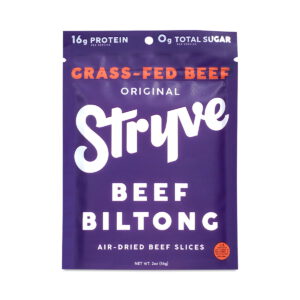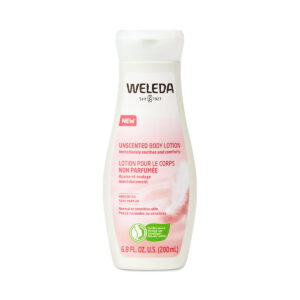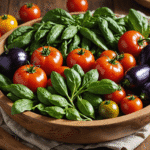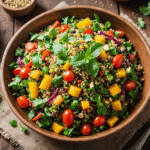- Healthy meal prep ideas for busy professionals
- Nutritional benefits of meal prepping
- Quick and easy recipes
- Essential meal prep tools
- Shopping list for busy schedules
- Tips for storing and reheating meals
- Weekly meal prep schedule
When it comes to grocery shopping as a busy professional, time is of the essence, but that doesn’t mean you have to compromise on quality or health. Incorporating healthy meal prep into your lifestyle begins with smart shopping choices. Here are some entertaining yet practical tips to enhance your grocery shopping experience, both online and offline.
Plan Ahead: One of the most important strategies for successful grocery shopping is creating a list before you head to the store. Take a moment to think about the meals you want to prepare for the week based on your busy schedule. Consider making meals that can easily be repurposed; for instance, roast a batch of vegetables that can be used in salads, stir-fries, or wraps.
Explore Local Options: Shopping at local farmers’ markets not only supports your community but often provides fresher and more organic produce. Look for seasonal fruits and vegetables that tend to be more affordable and flavorful. For example, in the spring, opt for leafy greens like spinach and kale that can be used in quick recipes or salads.
Choose Smart Proteins: When selecting proteins, consider budget-friendly options like beans, lentils, and chickpeas, which are excellent for vegans and vegetarians. These can be bulk-cooked, stored, and incorporated into various meals through the week. Alternatively, if you prefer meat, opt for chicken breasts or fish, which are quick to prepare and align well with a fitness-oriented diet.
Look for Healthy Grains: Whole grains like quinoa, brown rice, or farro not only provide energy but also contribute to a balanced diet. Purchase them in bulk to save money. Pair these grains with your prepped vegetables and proteins for nutritious and filling meals.
Vegan-friendly Faves: If you’re leaning towards plant-based eating, products like tofu, tempeh, or seitan are fantastic sources of protein. Many grocery stores now offer a range of vegan cheeses and plant-based yogurts that can enhance your meals without straying from your health goals.
Online Shopping Safety: If you decide to shop online, opt for well-reviewed and reputable grocery delivery services. Pay attention to packaging and expiration dates, especially for perishables. Make sure to read customer reviews about the freshness of fruits and vegetables, as how they arrive can significantly impact your meal prep outcomes.
Organic Choices: While shopping, keep an eye out for the organic label, especially on produce that you typically eat with the skin on, such as apples or strawberries. These choices can help limit pesticide exposure and promote better health.
Smart Snacking: Don’t forget about snacks! Items like nuts, seeds, and air-popped popcorn are great for busy professionals on the go. Portion these snacks into small containers for easy grab-and-go options during your busy workday.
Incorporating these tips into your grocery shopping routine can significantly streamline your meal prep process. From selecting healthy items to ensuring safety in both online and offline shopping, being a savvy shopper can help busy professionals achieve their nutritional goals without the hassle.
Nutritional benefits of meal prepping
Meal prepping provides a range of nutritional benefits that can empower busy professionals to make healthier food choices effortlessly. One of the primary advantages is the control it offers over portion sizes and ingredients, resulting in meals that are richer in nutrients and lower in calories. When you prepare your meals in advance, you can prioritize whole foods, lean proteins, and plenty of vegetables, ensuring that your diet is well-balanced and supports overall health.
For busy professionals, the convenience of meal prepping cannot be overstated. By dedicating a couple of hours each week to prepare meals, you can eliminate the temptation of unhealthy fast food or processed snacks during hectic workdays. Studies have shown that individuals who meal prep tend to consume more fruits and vegetables and are less likely to indulge in unhealthy eating behavior, such as binge snacking.
Meal prepping also aids in maintaining a healthy diet for those with specific dietary restrictions or goals, such as weight loss or increased muscle gain. By selecting the ingredients ahead of time, you can easily tailor your meals to meet your nutritional needs, allowing you to effectively monitor calorie intake and ensure adequate protein consumption. The table below illustrates a comparison of the nutritional content of typical takeout food versus a homemade meal prep option:
| Meal Type | Calories | Protein (g) | Fiber (g) | Sugar (g) |
|---|---|---|---|---|
| Takeout Chicken Fried Rice | 600 | 30 | 2 | 5 |
| Homemade Grilled Chicken with Quinoa and Broccoli | 450 | 40 | 8 | 3 |
As demonstrated, the homemade meal prep option not only contains fewer calories but also offers increased protein and fiber content while significantly reducing sugar intake. This is crucial for busy professionals seeking to maintain energy levels, improve focus, and establish healthier habits.
Moreover, meal prepping fosters mindful eating practices. When you take the time to prepare your meals, you tend to be more intentional about what you’re consuming. This mindfulness can lead to better food choices and decreased consumption of empty calories, enhancing your overall diet quality.
Lastly, meal prepping can save you money in the long run by reducing food waste and enabling bulk purchases of ingredients. Planning your meals allows for the use of leftovers, and you can choose recipes that utilize similar ingredients, optimizing your grocery budget while still enjoying various quick recipes throughout the week.
By embracing healthy meal prep, busy professionals can enjoy nutritious benefits that support their busy lifestyles and contribute to long-term health.
Quick and easy recipes
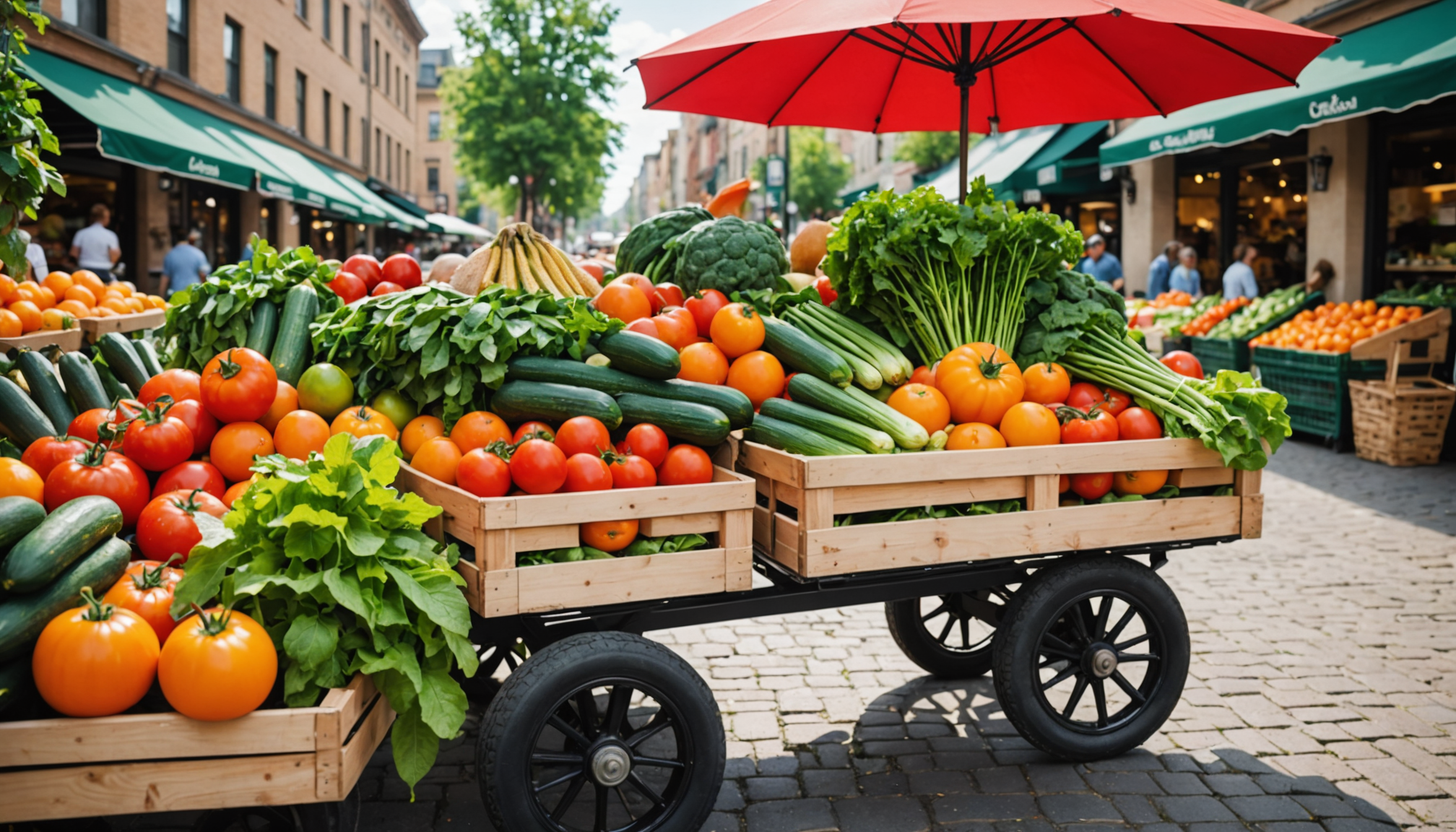
Grocery shopping doesn’t have to be a mundane chore; it can be a delightful adventure with the right approach! Here are some engaging strategies to and revolutionize your quick recipes with fresh, nutritious ingredients while saving time and money.
Make a Master List: Create a master grocery list organized by category (produce, proteins, grains, etc.). This not only streamlines your shopping experience but also ensures you don’t forget key ingredients for your meal preparation. Keep it simple and refer to it each week to ensure consistency in your healthy meal prep.
Shop Seasonally: Seasonality can heavily influence food quality and price. Focus on purchasing fruits and vegetables that are in season, as they tend to be fresher, tastier, and less expensive. For instance, in summer, tomatoes and cucumbers are abundant, while hearty root vegetables shine in the fall. This strategy can spice up your quick recipes!
Choose Frozen or Canned Options: Frozen fruits and vegetables are often just as nutritious as fresh ones and can be more affordable, especially out of season. They are perfect for busy professionals on the go who need to whip up meals quickly. Canned beans or tomatoes are also great staples to have on hand; they can be added to soups, salads, or stir-fries with little effort.
Utilize Bulk Bins: For dry goods like quinoa, oats, or nuts, consider utilizing bulk bins at your local grocery store. This is typically more cost-effective and allows you to buy only the amount you need, minimizing food waste.
Experiment with New Products: Keep your meals exciting by trying new ingredients. Look for plant-based protein options like edamame or tempeh, which can be a fantastic addition to your meal prep. Browse the international aisle of the grocery store to discover unique spices and sauces that can transform a basic dish into something extraordinary.
Use Your Phone: Store apps have become incredibly useful for shopping. Use grocery store apps to look up items before you go to the store, ensuring you can find what you need without wandering the aisles. Many stores offer digital coupons and promotions that can save you money on your healthy meal prep ingredients.
Read Labels: Whether online or in-store, make reading ingredient labels a habit. Be cautious of items with long ingredient lists filled with preservatives and additives. Aim for items with fewer ingredients that you can recognize, as these are often healthier and more trustworthy options.
Shop Health-Conscious Brands: If you prefer online shopping, seek out retailers that offer organic and healthy products. Websites like Thrive Market or Amazon Fresh often have a wide selection of budget-friendly organic items that can align with your dietary preferences while making meal prepping easier.
Safety First: Regardless of where you shop, ensure that perishable items are stored properly during transport. Pay attention to the condition of items, especially fresh produce, to avoid spoilage. Also, familiarize yourself with food safety practices, such as washing your fruits and vegetables thoroughly before use, to help maintain health standards.
By adopting these shopping strategies, busy professionals can enhance their meal prep game while making nutritious eating enjoyable and accessible. Streamlining your grocery shopping not only saves time but also ensures you have all the ingredients needed for your healthy meal prep and quick recipes, ultimately fueling your week with energy and wellness.
Essential meal prep tools
The right tools can make all the difference in your meal prep experience, especially for busy professionals seeking efficiency and ease in their cooking routine. Investing in essential meal prep tools not only simplifies the cooking process but also encourages you to maintain the habit of preparing healthy meals regularly.
One of the most vital tools in your kitchen is a high-quality set of knives. A sharp chef’s knife can make chopping vegetables and slicing proteins quick and effortless. Additionally, consider adding a paring knife for smaller tasks, such as peeling fruits. A cutting board, preferably made of wood or bamboo, provides a sturdy surface to protect both your knives and your countertops.
Another must-have is a set of good storage containers. Opt for glass containers with airtight lids, as they keep food fresh longer and are microwave-safe, making reheating convenient. Clear containers allow you to easily see what meals you have prepared, reducing the temptation to grab takeout on particularly busy days. If you often prepare salads, look for containers with compartments to keep dressings separate from the greens until you’re ready to eat.
For busy professionals, a multi-cooker, such as an Instant Pot, can be a game changer. This versatile appliance allows you to sauté, steam, slow cook, and even make yogurt, all in one pot. With the ability to set delayed cooking times, you can have meals ready when you arrive home after a long day.
Investing in food prep tools like a digital kitchen scale and measuring cups can also aid portion control, ensuring your meals align with your nutritional goals. Using a scale helps accurately measure servings, which is particularly useful when prepping for weight management or fitness regimens.
If you love smoothies or soups, a high-speed blender is essential. It can quickly blend fruits and vegetables into nutritious drinks or purée soups seamlessly, allowing you to integrate more healthy ingredients into your diet with minimal effort. Not only does this make meal prep quicker, but it also encourages you to experiment with various recipes, adding different flavors and nutrients to your meals regularly.
A vegetable spiralizer can add fun to your meal prep, especially if you enjoy vegetable noodles as a healthy alternative to traditional pasta. This tool can transform zucchini, carrots, or sweet potatoes into creative dishes that are both visually appealing and nutritious.
Don’t forget about kitchen gadgets like slow cookers or rice cookers, which can prepare meals while you focus on other tasks. These tools are particularly helpful for busy professionals who may not have the time to monitor cooking on the stove.
Lastly, having a good-quality mixing bowl set can facilitate the preparation of various dishes simultaneously. Opt for bowls that are stackable for easy storage and come in various sizes to suit different recipes.
“The tools of the trade make cooking a delight, especially for those juggling a busy schedule.”
By equipping your kitchen with these essential meal prep tools, you can streamline your cooking process. This investment paves the way for healthier eating habits, ensuring that you consistently have homemade meals ready to enjoy, no matter how hectic your week may become.
Shopping list for busy schedules
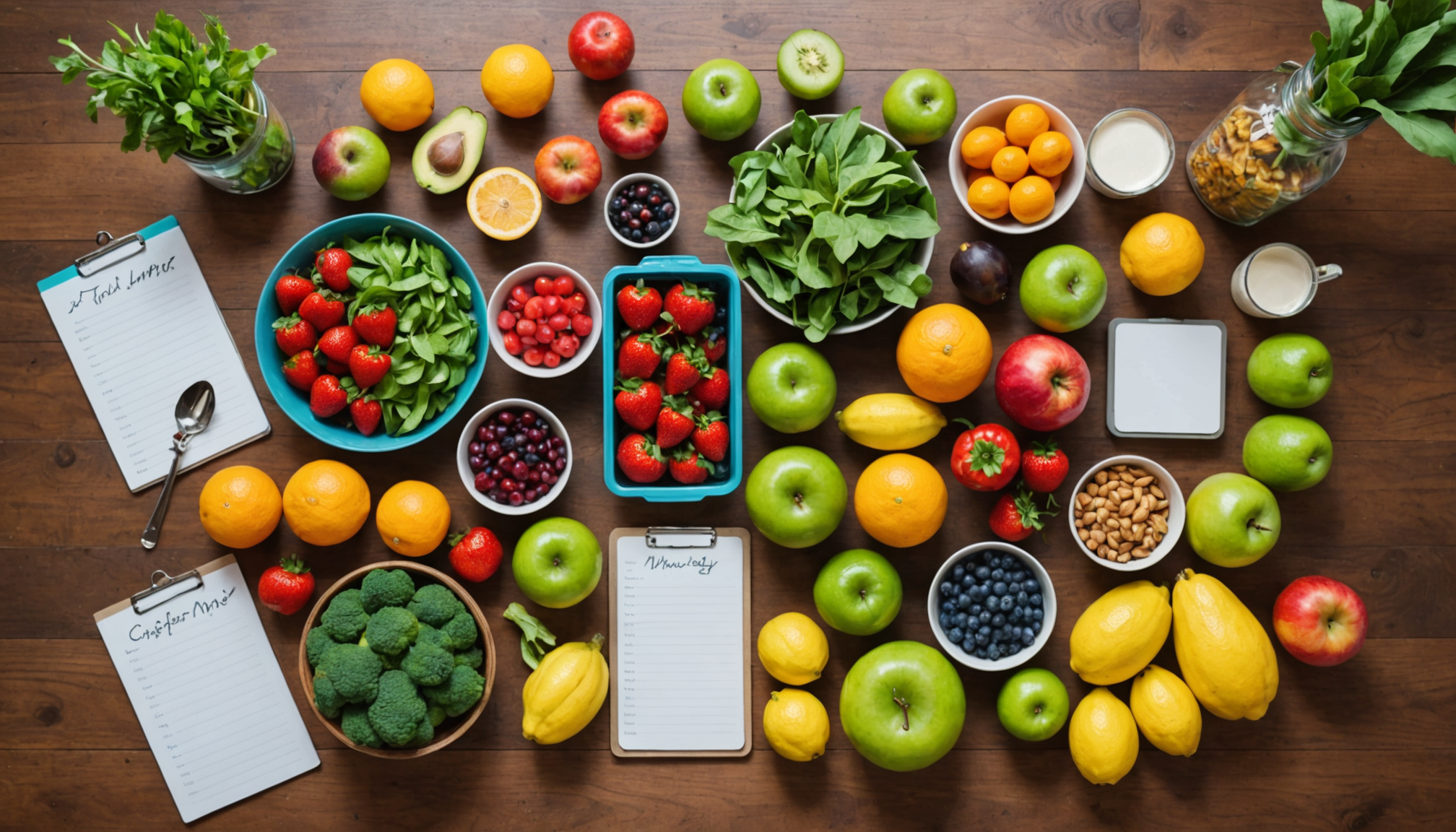
Creating a shopping list tailored for your busy schedule can drastically simplify your meal prep experience. Start by categorizing items based on where they are located in the grocery store. This approach eliminates unnecessary backtracking and saves you time. For instance, list all fruits and vegetables together, then cluster proteins, grains, and other essentials. This method not only enhances efficiency but also ensures that you don’t overlook any key ingredients while navigating through the store.
When forming your list, focus on versatile ingredients that can serve multiple purposes. Items such as spinach can be added to smoothies, salads, and omelets, making them an excellent choice. Similarly, ingredients like quinoa or brown rice work harmoniously in bowls, salads, or as sides, showcasing their flexibility as meal staples. This approach allows for greater creativity in your quick recipes while maximizing the utility of your groceries.
Incorporating pantry staples and quick-cooking items can also be a game changer during hectic weeks. Stock up on canned beans, frozen vegetables, and pre-cooked grains. These items not only have a long shelf life but can swiftly transform into nutritious meals with minimal effort. By planning your meals around these accessible ingredients, you maintain a steady supply of healthy meal prep options, reducing the temptation to rely on convenience foods.
Be sure to account for any dietary preferences or restrictions within your shopping list. If you embrace a plant-based lifestyle, prioritize whole foods such as legumes, nuts, seeds, and plant-based dairy alternatives. For those with specific dietary goals, keep an eye on labels during shopping. Select products that align with your nutrition plans, aiming for reduced sugar and higher protein content where applicable. This diligence improves the overall quality of meals and supports your health objectives.
Don’t forget to integrate seasonal produce into your list, as they’re usually more affordable and flavorful. With a well-organized and strategic shopping list in hand, you will navigate the grocery store with confidence. The result? A kitchen stocked with the ingredients you need to create delicious, healthy meals efficiently, even on your busiest days.
- How can I make meal prep fit into my busy schedule?
- Start by dedicating a specific day each week for meal preparation, such as Sundays. Choose recipes that can be cooked in bulk and stored in portioned containers, allowing for easy access during the week.
- What are the best containers for meal prep?
- Glass containers with airtight lids are ideal for meal prep since they keep food fresh and are microwave-safe. Look for different sizes to accommodate various meal types.
- How long can I store prepped meals in the fridge?
- Most prepped meals can be safely stored in the refrigerator for 3 to 5 days. For longer storage, consider freezing meals to preserve their freshness and flavor.
- What are some quick recipes I can try?
- Consider simple recipes like quinoa bowls topped with vegetables, grilled chicken wraps, or overnight oats. All these options can be prepared in advance and customized easily.
- Is it cheaper to meal prep or eat out?
- Meal prepping is generally more cost-effective than eating out, as it allows you to buy ingredients in bulk and minimize food waste. Preparing meals at home often translates to better portion control and healthier choices.
- Do I need special equipment for meal prepping?
- While not strictly necessary, investing in a few key tools like good knives, storage containers, and a slow cooker can significantly ease the meal prep process and improve your cooking experience.
- How can I stay motivated to meal prep every week?
- Mix up your recipes to keep things exciting, enlist a friend to join you, or set small goals for your meal prep to celebrate your achievements. Finding joy in the process can maintain your motivation.
Tips for storing and reheating meals
Storing and reheating your meals properly is crucial for maintaining both their taste and nutrition, especially for busy professionals who rely on meal prep to stay organized throughout the week. Implementing some tried-and-true methods can elevate your meal experience and ensure that your quick recipes remain delicious and safe to consume.
Use Right Containers: Invest in high-quality containers made from glass or BPA-free plastic that are freezer-safe and microwave-safe. Airtight containers prevent moisture from entering and keep meals fresh for longer. Opt for a variety of sizes to accommodate different meal portions, whether you are prepping a large batch of quinoa or a single serving of stir-fried vegetables.
Label and Date: When storing your meals, labeling containers with the contents and date is an essential practice. This not only helps you keep track of when meals were prepared but also aids in managing your fridge effectively. It minimizes the wastage of food and ensures you consume meals at their freshest.
Cool Before Storing: To preserve the integrity and flavor of your meals, allow hot food to cool to room temperature before sealing it in containers. This prevents moisture buildup and condensation, which can lead to soggy textures, especially in dishes like stir-fries or pasta.
Organize Your Fridge: Create a designated space for meal preps in your fridge, prioritizing visibility. Store older meals at the front and newer batches behind them, so you consume items in the order of preparation. This simple organization can reduce the likelihood of reaching for unhealthy snacks, ensuring that healthy meal prep remains at the forefront of your diet.
Freezing for Freshness: If you have extra meals, freezing them is a fantastic option. Many healthy meals can be frozen for up to three months without losing flavor or nutritional value. Dishes like soups, stews, and even veggie chili freeze well and can be reheated quickly for a wholesome meal. Remember to leave a little space in containers when freezing, as liquids expand when frozen.
Reheating Techniques: For the best flavor and texture when reheating, consider using the stovetop when possible. This method allows for more even heating and helps retain the dish’s original consistency. If you use the microwave, add a splash of water to steamed vegetables or grains to prevent them from drying out. Heat in intervals, stirring in between to ensure even warming throughout.
Mindful Eating: When reheating meals, take time to plate your food attractively. This simple act can elevate your meal experience, encouraging healthier choices during busy workdays. Remember to be mindful of portion sizes, as it’s easy to over-serve when you’re hungry!
Online Meal Prep Safety: If you opt for online grocery shopping, ensure that your meals’ integrity is maintained during transport. Check reviews for freshness and how items are handled during delivery. Look for services that focus on fresh, seasonal ingredients to align with your healthy meal prep goals!
Effective storing and reheating not only keep your meal prep enjoyable and satisfying but also extends the life of your food, making your busy professional lifestyle more manageable. With these proven strategies, preparing healthy meals can be worry-free and immensely rewarding.
Weekly meal prep schedule
Crafting a weekly meal prep schedule is essential for busy professionals looking to maintain healthy eating habits amidst their hectic schedules. An organized plan not only saves time but also ensures you’re making the most of your nutritious ingredients each week.
Designate Prep Days: Choose one or two days each week specifically for meal prep. A popular option is Sunday, where you can devote a few hours to cooking and assembling your meals for the week ahead. Alternatively, consider a mid-week session on Wednesday to refresh your meals and prevent monotony. Consistently reserving time in your calendar for meal prep helps keep it a priority and makes it a habit.
Create Balanced Menus: When planning your menu, focus on incorporating a variety of food groups. Aim for meals that feature lean proteins, whole grains, and plenty of vegetables for a balanced diet. For instance, a grilled chicken breast with quinoa and roasted veggies is a fulfilling option. Consider preparing multiple servings of each recipe, which can be easily mixed and matched throughout the week to create diverse meal combinations.
Stick to a Rotation: To simplify your shopping and meal prep process, create a rotation of your favorite meals. Select five to seven dishes that you enjoy and rotate them over the course of several weeks. This approach minimizes the need for extensive planning each week while ensuring variety. Including a mix of your go-to quick recipes and experimenting with a new dish weekly can keep your meal plan exciting.
Prep for Snacks and Breakfast: Don’t forget to allocate some of your prep time for healthy snacks and breakfast options. Creating a supply of overnight oats, egg muffins, or pre-portioned snack packs with fruits, nuts, and yogurt can make your mornings easier and healthier. Prepare these items alongside your main meals to ensure you have nutritious options ready to go at all times.
Use Time-Saving Techniques: Incorporate batch cooking into your prep session to save time. Cook larger quantities of staples like brown rice, quinoa, or beans in one go. These can be refrigerated or frozen in portions, allowing you to easily assemble meals. Additionally, consider using appliances like slow cookers or multi-cookers to prepare meals hands-free while you attend to other tasks.
Stay Flexible: While sticking to a meal prep schedule is useful, allow room for adjustments. Life can be unpredictable, so if something comes up and you can’t stick to your plan, don’t hesitate to shift your meals around. The beauty of meal prepping is that it’s adaptable; leftover meals can easily become lunch the next day, or ingredients can be swapped without much hassle.
Engage with Your Meals: To keep meal prep enjoyable, try cooking with a friend or partner. Turn your prep day into a social event, allowing you to bond and share healthy cooking tips while cutting down on workload. Engaging with the process makes healthy meal prep feel less like a chore and more like a rewarding activity.
By implementing an organized weekly meal prep schedule, busy professionals can streamline healthy eating, ensuring that quick recipes are ready to go at a moment’s notice. This proactive approach enhances your week and keeps you on track with your health goals, making nutritious choices accessible and effortless.
New Customers Offer!
Free Gift for the new customer
$24 Value, When You Subscrib Visit Thrive Market

